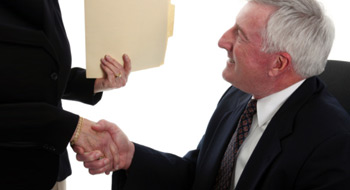
Delegates at the 2012 Business of Aging Summit held earlier this week in Toronto previewed some of the latest innovations designed to help employers better engage mature workers. In an afternoon session, a number of entrepreneurs were given the chance to pitch their products to the business leaders assembled.
One of those entrepreneurs, Barbara Jaworski, CEO of the Workplace Institute, (workplaceinstitute.org) explained the Older Workforce Strategy Toolkit, which the organization created to help employers better manage their mature employees and create a strategy around older workers. The toolkit includes a variety of literature and tips organized in categories such as Laying the Foundation, Getting Started, Strategies and Tactics and KAA-Boomer Focus. (The organization coined the term “KAA-Boomers” to take into account the fact that boomers are looking to have fun and be heard in their retirement years).
The toolkit includes an engagement framework the Workplace Institute developed around 50+ employees, offering employers tips on getting the most from this knowledgeable demographic. The framework takes into account important factors such as how to transfer knowledge from the experienced older workers to younger generations, and succession planning for business leaders nearing retirement.
“Younger workers coming up aren’t necessarily coming up with the skills needed to fill the jobs being left by aging boomers,” noted Jaworski in her presentation.
In another pitch, delegates heard from an organization seeking to improve the brain health of Canadians. Cogniciti (cogniciti.com) is a for-profit firm borne out of the research and innovation efforts of Toronto’s Baycrest healthcare facility and MaRS Discovery District. Michael Meagher, the company’s president, explained how 500,000 Canadians miss work each day because of brain health issues, which are at the root of 70% of workplace disability costs.
Brain health differs from mental health, in that it’s focused on memory and coordination. The company’s suite of tools is built around detection, prevention and treatment of brain health issues. Cogniciti’s online brain health assessment deals with the former, helping users determine whether their memory loss is normal, or whether they should see their doctor about it.
Around prevention, the company has designed an e-book of recipes, called MindFull, which take into account optimal nutrition and foods that help brain function.
Finally, the company has designed an app to help workers deal with their memory loss; an employee can enter scheduled meeting information into the app, including names and photographs of all expected attendees so that the app user will have visual cues to remember the names of those in a particular meeting.
Dr. Kim Bercovitz of The Exercise Doctor (theexercisedoctor.com) explained how her company is seeking to solve another problem that is affecting healthcare costs and company productivity: bone loss.
“We sit too much,” said Bercovitz. “We sit all day at work at our desks. We come home and sit on our couches, and at the computer. We’re not active enough.”
Given the long hours employees spend in the workplace, Bercovitz said it makes sense that employers should be encouraging staff to incorporate exercise into their workday. With that in mind, The Exercise Doctor has created a series of exercises that are designed to be done at work in 10-minute intervals.
Bercovitz demonstrated modified squats, modified push-ups and modified crunches, which require only a desk and a chair to be done properly. She explained that employers can upload the organization’s exercise videos onto an intranet site for employees to access, or employees can follow the videos from their smartphones.
